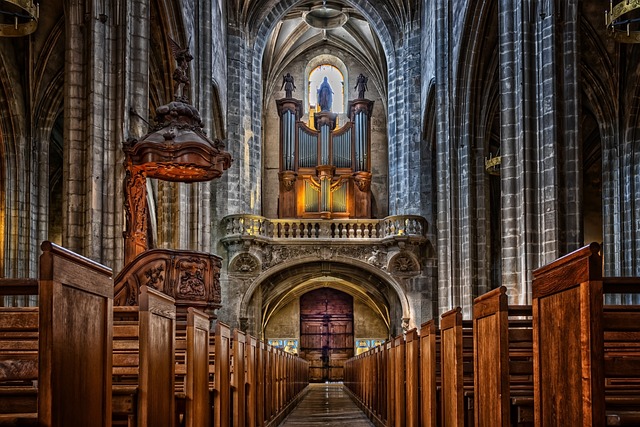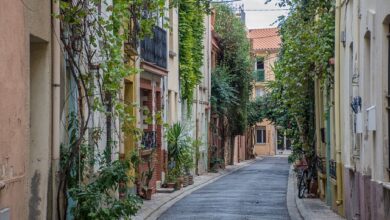Exploring France’s Most Famous Cathedrals and Churches

France, a country renowned for its rich history, exquisite art, and architectural marvels, is home to some of the world’s most iconic cathedrals and churches. These sacred structures not only serve as places of worship but also stand as timeless testaments to centuries of craftsmanship, faith, and cultural evolution. From the soaring spires of Notre-Dame de Paris to the intricate Gothic details of Chartres Cathedral, each site offers a unique glimpse into France’s spiritual and artistic heritage. Join us on this journey as we explore France’s most famous cathedrals and churches, uncovering their stories, significance, and splendor.
1. Notre-Dame de Paris: A Symbol of Resilience and Faith
Standing majestically on Île de la Cité in the heart of Paris, Notre-Dame Cathedral is one of the most recognizable landmarks in the world. Construction began in 1163 under Bishop Maurice de Sully and spanned nearly two centuries, resulting in a masterpiece of French Gothic architecture. The cathedral’s stunning rose windows, flying buttresses, and gargoyles have captivated visitors for generations.
Notre-Dame has witnessed countless historical events, from royal coronations to moments of national mourning. Its role in Victor Hugo’s novel The Hunchback of Notre-Dame further cemented its place in popular culture. In 2019, a devastating fire brought global attention to the cathedral, sparking an outpouring of support and efforts to restore it to its former glory. Today, Notre-Dame remains a symbol of resilience and hope, embodying the enduring spirit of France.
2. Chartres Cathedral: A Masterpiece of Gothic Art
Located southwest of Paris, Chartres Cathedral (Cathédrale Notre-Dame de Chartres) is often hailed as the pinnacle of Gothic architecture. Built between 1194 and 1250, this UNESCO World Heritage Site is celebrated for its harmonious design, innovative use of light, and unparalleled collection of stained glass windows—over 150 survive intact, depicting biblical scenes with remarkable detail.
The labyrinth embedded in the floor of the nave invites contemplation, while the crypt houses ancient relics believed to be part of the Virgin Mary’s veil. Pilgrims and tourists alike are drawn to Chartres for its spiritual aura and architectural brilliance. As sunlight filters through the vibrant stained glass, the interior transforms into a kaleidoscope of colors, creating an ethereal experience that feels almost otherworldly.
3. Mont Saint-Michel Abbey: Where Heaven Meets Earth
Perched atop a rocky island surrounded by tidal waters, Mont Saint-Michel is one of France’s most enchanting destinations. This Benedictine abbey, dating back to the 8th century, rises dramatically against the sky, blending seamlessly with its natural surroundings. Often referred to as “The Wonder of the Western World,” Mont Saint-Michel attracts millions of visitors annually who come to marvel at its medieval architecture and mystical ambiance.
The abbey’s cloisters, chapels, and grand halls reflect the ingenuity of its builders, who constructed the complex over several centuries. During high tide, the island appears to float on water, adding to its magical allure. Whether you’re exploring its narrow streets or gazing at the breathtaking views from the abbey walls, Mont Saint-Michel promises an unforgettable encounter with history and spirituality.
4. Reims Cathedral: The Coronation Church of Kings
In the Champagne region lies Reims Cathedral (Cathédrale Notre-Dame de Reims), a jewel of Gothic architecture and the traditional site of French kings’ coronations. Commissioned in the early 13th century, the cathedral boasts an awe-inspiring façade adorned with statues of saints and biblical figures. Inside, the celestial vaulted ceilings and luminous stained glass windows create an atmosphere of divine serenity.
Reims Cathedral holds immense historical importance, having hosted the crowning ceremonies of 25 French monarchs, including Charles VII, whose ceremony was attended by Joan of Arc. After suffering damage during World War I, the cathedral underwent extensive restoration, thanks in part to international donations spearheaded by American philanthropist John D. Rockefeller. Today, it stands as a testament to reconciliation and shared humanity.
5. Sainte-Chapelle: A Jewel Box of Light
Nestled within the Palais de la Cité in Paris, Sainte-Chapelle is a hidden gem that dazzles with its kaleidoscopic beauty. Commissioned by King Louis IX in the 13th century to house precious Christian relics, this small chapel is renowned for its breathtaking stained glass windows, which cover nearly every inch of wall space. The windows depict over 1,000 biblical scenes, immersing visitors in a radiant sea of color.
Despite its modest size, Sainte-Chapelle exemplifies the height of Rayonnant Gothic style, characterized by slender columns and expansive glass surfaces. Walking through its upper chapel feels like stepping into a luminous dream, where light dances across golden accents and intricate stone carvings. It’s no wonder that Sainte-Chapelle is considered one of the finest achievements of medieval architecture.
6. Basilica of Sacré-Cœur: A Beacon of Devotion
Perched atop the hill of Montmartre, the Basilica of Sacré-Cœur offers panoramic views of Paris alongside its striking white domes. Consecrated in 1919, this Roman Catholic church was built as a penance for the sins of the Franco-Prussian War and the tumultuous events of the Paris Commune. Its Romano-Byzantine design sets it apart from the city’s predominantly Gothic architecture, featuring ornate mosaics, towering arches, and a massive bell known as “La Savoyarde.”
Sacré-Cœur serves as both a place of worship and a symbol of national unity. Visitors can climb to the dome for sweeping vistas of the capital or attend mass amidst the serene ambiance of its candlelit interior. Whether viewed from afar or explored up close, the basilica exudes a sense of peace and devotion that resonates deeply with all who visit.
7. Strasbourg Cathedral: A Marvel of Red Sandstone
Known as the “Pink Cathedral” due to its distinctive red sandstone construction, Strasbourg Cathedral (Cathédrale Notre-Dame de Strasbourg) dominates the skyline of Alsace’s capital. Completed in 1439, this Gothic masterpiece once held the title of the world’s tallest building, thanks to its towering spire reaching 142 meters (466 feet).
Inside, the astronomical clock—a Renaissance-era engineering feat—draws crowds eager to witness its hourly display of automatons and celestial movements. The cathedral’s intricate sculptures, delicate tracery, and majestic organ make it a must-see destination for anyone traveling through eastern France. Strasbourg Cathedral embodies the fusion of Germanic and French influences, reflecting the region’s unique cultural identity.



